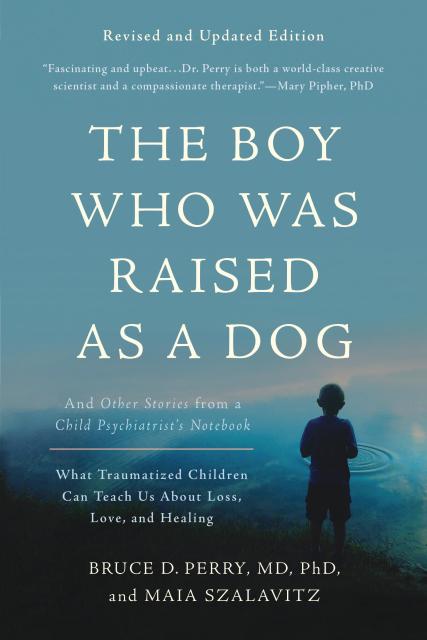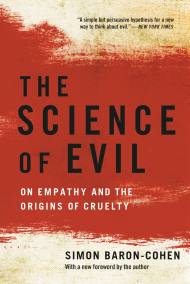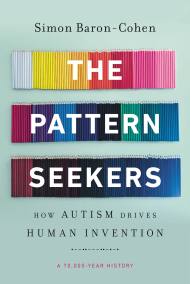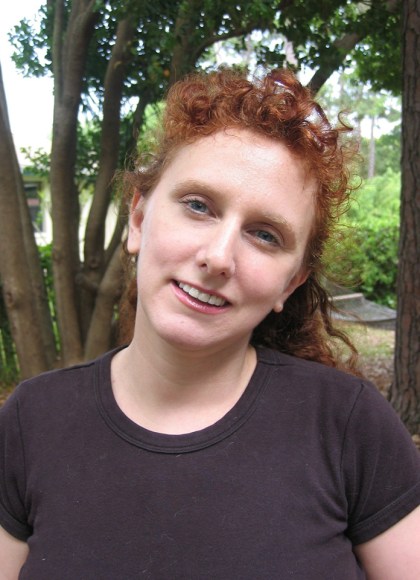Promotion
Use code BEST25 for 25% off storewide. Make sure to order by 11:59am, 12/12 for holiday delivery!
By clicking “Accept,” you agree to the use of cookies and similar technologies on your device as set forth in our Cookie Policy and our Privacy Policy. Please note that certain cookies are essential for this website to function properly and do not require user consent to be deployed.
The Boy Who Was Raised as a Dog
And Other Stories from a Child Psychiatrist's Notebook -- What Traumatized Children Can Teach Us About Loss, Love, and Healing
Contributors
Formats and Prices
- On Sale
- Aug 29, 2017
- Page Count
- 448 pages
- Publisher
- Basic Books
- ISBN-13
- 9780465094455
Price
$21.99Price
$28.99 CADFormat
Format:
- Trade Paperback (Revised) $21.99 $28.99 CAD
- ebook $14.99 $19.99 CAD
- Audiobook Download (Unabridged) $31.99
This item is a preorder. Your payment method will be charged immediately, and the product is expected to ship on or around August 29, 2017. This date is subject to change due to shipping delays beyond our control.
Buy from Other Retailers:
In this classic work of developmental psychology, renowned psychiatrist and the coauthor of the #1 New York Times bestseller What Happened to You? reveals how trauma affects children—and outlines the path to recovery
How does trauma affect a child’s mind—and how can that mind recover?
Child psychiatrist Dr. Bruce D. Perry has helped children faced with unimaginable horror: genocide survivors, murder witnesses, kidnapped teenagers, and victims of family violence. In the classic The Boy Who Was Raised as a Dog, Dr. Perry tells their stories of trauma and transformation and shares their lessons of courage, humanity, and hope. Deftly combining unforgettable case histories with his own compassionate, insightful strategies for rehabilitation, Perry explains what happens to children’s brains when they are exposed to extreme stress—and reveals the unexpected measures that can be taken to ease such pain and help them grow into healthy adults. Only when we understand the science of the mind and the power of love and nurturing can we hope to heal the spirit of even the most wounded child.
-
“With humility, compassion, and strong science, The Boy Who Was Raised as a Dog transforms horrifying childhood traumatic experiences into opportunities for profound change and resilience.”Psychology Today
-
“A powerful read for anyone seeking to understand the resilience of the human spirit.”Times Now
-
“In beautifully written, fascinating accounts of experiences working with emotionally stunted and traumatized children, child psychiatrist Perry educates readers about how early-life stress and violence affects the developing brain. He offers simple yet vivid illustrations of the stress response and the brain’s mechanisms with facts and images that crystallize in the mind without being too detailed or confusing.”Publishers Weekly
-
“Perry has learned a thing or two about how not to raise a prospective sociopath. Here he shares the stories of several children he has encountered in his decades as a child psychiatrist and expert on childhood trauma . . . . He makes a powerful case for early intervention for disruptive children to prevent adult sociopathy.”Booklist
-
“Readable, informative about the workings of language, memory, trust, and choice, and ultimately optimistic—while critical of a society that exudes violence and ignores prevention—this book demands and deserves attention from parents, educators, policymakers, courts, and therapists. Highly recommended.”Library Journal (starred review)
-
“I have admired and respected Bruce Perry for over a decade. His commitment to helping young children raised in chaotic and abusive environments is nothing short of remarkable. This book is an important tool in helping us understand the critical impact of early experiences in children’s lives, and it shows us how to help those who have been damaged by neglect. Anyone who deals with vulnerable or troubled youth—from social workers to judges, daycare workers to high school teachers, parents to politicians—can gain important perspectives from this book.”Rob Reiner
-
“The Boy Who Was Raised as a Dog is Bruce Perry’s finest achievement… It gives us the opportunity to unlock the deepest mystery of our species: why some children turn out to be heroes and others to be predatory sociopaths. Anyone who wants to understand childhood trauma and its heartbreaking consequences must read this book.”Andrew Vachss, best-selling author of Mask Market, founder of PROTECT: The National Association to Protect Children
-
“I have never encountered a child advocate with a better mind, a bigger heart, or a more generous spirit than Bruce Perry. This book captures the essence of his insights and the heroism of his actions on behalf of children who have encountered the dark side of human experience.”James Garbarino, Ph.D., author of Lost Boys: Why Our Sons Turn Violent and How We Can Save Them
-
“In this harrowing but profoundly humane book, Perry and Szalavitz provide an all too timely, utterly engrossing account of traumatized children’s lives… Once I opened it, I could not put it down.”Sarah Blaffer Hrdy, author of Mother Nature: Maternal Instincts and How They Shape the Human Species
-
“Filled with compassionate, caring stories by a wise healer and scientist, this book will appeal to all who are interested in understanding how children heal.”Lynn Ponton, M.D., author of The Romance of Risk
-
“For many years, Bruce Perry’s work has been deserving of our highest praise. This book is his crowning achievement, the ultimate combination of science and humanity.”Joel A. Dvoskin, PhD, University of Arizona College of Medecine, former president, American Psychology-Law Societ
-
"Fascinating and upbeat...Dr. Perry is both a world-class creative scientist and a compassionate therapist."Mary Pipher, Ph.D., author of Reviving Ophelia and Letters to a Young Therapist
Newsletter Signup
By clicking ‘Sign Up,’ I acknowledge that I have read and agree to Hachette Book Group’s Privacy Policy and Terms of Use








